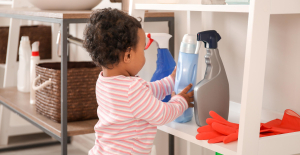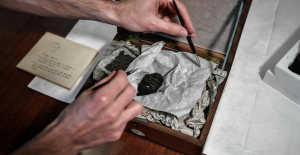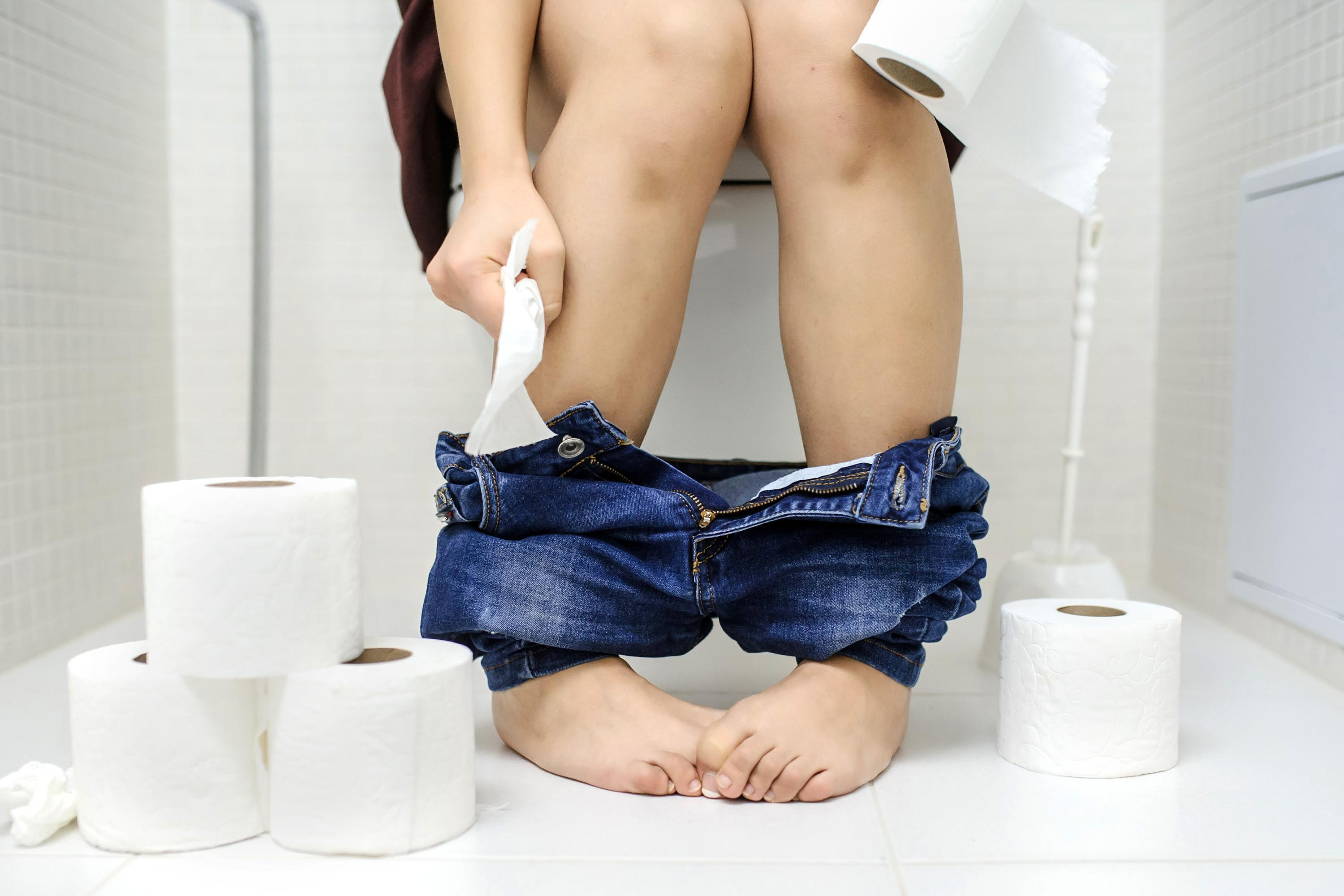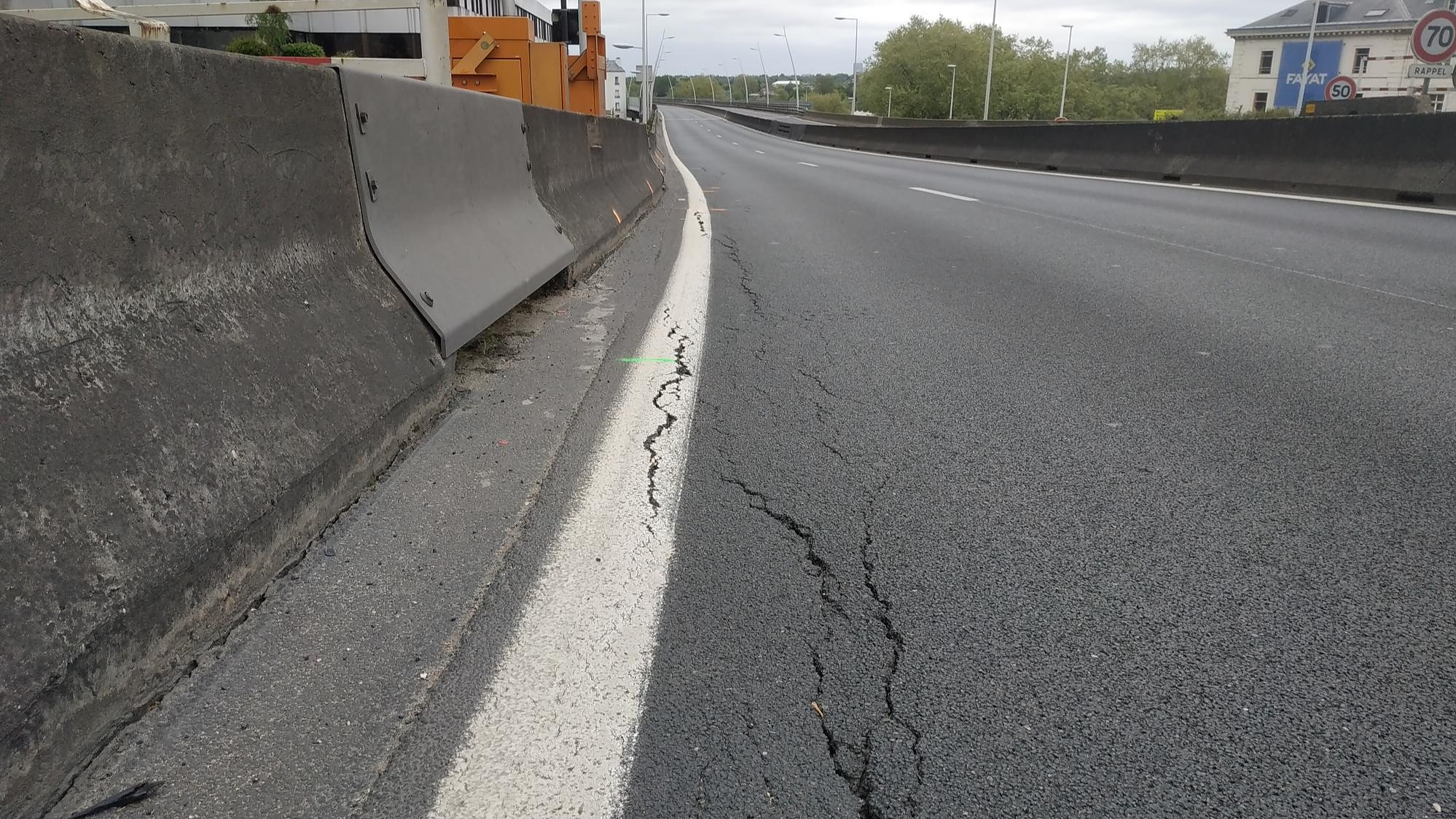With the Covid-19 pandemic, we have learned that to avoid the transmission of viruses and bacteria, we must wash our hands, wear a mask and ventilate. But another everyday gesture would save us a lot of misery: lowering the lid on the toilet seat before flushing. Because the latter will disperse, in the form of aerosols, the pathogens present in the water of the bowl contaminated by fecal matter.
“It is a known mode of transmission in hospitals for years. Particularly for bacteria resistant to antibiotics or certain viruses, such as noroviruses responsible for gastroenteritis,” explains Gabriel Birgand, hygienist pharmacist at Chu de Nantes. Any pathogen present in stool, such as Sar-CoV2, can potentially be transmitted in this way. A mode of contamination that we understand better and better.
Also read: “Hygiene and safety of school toilets are among the most essential rights of children”
Thus in 2022, American researchers visualized, using green lasers, the propagation of droplets emitted by a toilet flush. They found that within eight seconds of starting the toilet, the particles generated are carried up to 1.5 meters above the bowl! “Even though we expected to see these particles, we were surprised by the force of the jet ejecting them from the bowl,” John Crimaldi, one of the authors of the study, pointed out on The Conversation website. To avoid exposure to these plumes of aerosols, the most obvious action is to close the lid before flushing the toilet. Whether in public places or at home, and especially when a family member is sick.
But this precaution does not completely eliminate the risk, as a study recently published by the specialized journal American Journal of Control has just demonstrated. Researchers from the University of Tucson, Arizona, and Reckitt Benkiser, a manufacturer of cleaning products, analyzed the spread of viruses that are non-pathogenic to humans with toilet lids open or closed. They then collected and analyzed samples of the water from the bowl as well as the toilet surfaces, floor and walls. They found viruses on the seats, but also on the surrounding surfaces (floors, walls), whether the lid was closed or not. “Which is not surprising since the toilet lid is not completely airtight,” comments Gabriel Birgand.
Also read: 4.5 billion people around the world do not have access to suitable toilets
Reckkit Benkiser researchers also showed that adding disinfectant to the toilet bowl before flushing or using disinfectant dispensers in the toilet tank were two effective ways to reduce contamination from flushing the toilet. The solution recommended by the cleaning product manufacturer's researchers is therefore to disinfect the toilets regularly, even systematically.
But as Gabriel Birgand reminds us, “the use of biocidal products must be done sparingly. The most effective way to prevent transmission through contaminated surfaces is hand washing. Washing your hands with soap and water (or hydroalcoholic gel) after using the toilet will help eliminate germs. To be effective, it is recommended to scrub hands and fingers vigorously with soapy water for 20 to 30 seconds, including under the nails.

 B:SM will break its investment record this year with 62 million euros
B:SM will break its investment record this year with 62 million euros War in Ukraine: when kyiv attacks Russia with inflatable balloons loaded with explosives
War in Ukraine: when kyiv attacks Russia with inflatable balloons loaded with explosives United States: divided on the question of presidential immunity, the Supreme Court offers respite to Trump
United States: divided on the question of presidential immunity, the Supreme Court offers respite to Trump Maurizio Molinari: “the Scurati affair, a European injury”
Maurizio Molinari: “the Scurati affair, a European injury” Irritable bowel syndrome: the effectiveness of low-carbohydrate diets is confirmed
Irritable bowel syndrome: the effectiveness of low-carbohydrate diets is confirmed Beware of the three main sources of poisoning in children
Beware of the three main sources of poisoning in children First three cases of “native” cholera confirmed in Mayotte
First three cases of “native” cholera confirmed in Mayotte Meningitis: compulsory vaccination for babies will be extended in 2025
Meningitis: compulsory vaccination for babies will be extended in 2025 When traveling abroad, money is a source of stress for seven out of ten French people
When traveling abroad, money is a source of stress for seven out of ten French people Elon Musk arrives in China to negotiate data transfer and deployment of Tesla autopilot
Elon Musk arrives in China to negotiate data transfer and deployment of Tesla autopilot Patrick Pouyanné, CEO of TotalEnergies, is very reserved about the rapid growth of green hydrogen
Patrick Pouyanné, CEO of TotalEnergies, is very reserved about the rapid growth of green hydrogen In the United States, a Boeing 767 loses its emergency slide shortly after takeoff
In the United States, a Boeing 767 loses its emergency slide shortly after takeoff A charred papyrus from Herculaneum reveals its secrets about Plato
A charred papyrus from Herculaneum reveals its secrets about Plato The watch of the richest passenger on the Titanic sold for 1.175 million pounds at auction
The watch of the richest passenger on the Titanic sold for 1.175 million pounds at auction Youn Sun Nah: jazz with nuance and delicacy
Youn Sun Nah: jazz with nuance and delicacy Paris Globe, a new international theater festival
Paris Globe, a new international theater festival Skoda Kodiaq 2024: a 'beast' plug-in hybrid SUV
Skoda Kodiaq 2024: a 'beast' plug-in hybrid SUV Tesla launches a new Model Y with 600 km of autonomy at a "more accessible price"
Tesla launches a new Model Y with 600 km of autonomy at a "more accessible price" The 10 best-selling cars in March 2024 in Spain: sales fall due to Easter
The 10 best-selling cars in March 2024 in Spain: sales fall due to Easter A private jet company buys more than 100 flying cars
A private jet company buys more than 100 flying cars This is how housing prices have changed in Spain in the last decade
This is how housing prices have changed in Spain in the last decade The home mortgage firm drops 10% in January and interest soars to 3.46%
The home mortgage firm drops 10% in January and interest soars to 3.46% The jewel of the Rocío de Nagüeles urbanization: a dream villa in Marbella
The jewel of the Rocío de Nagüeles urbanization: a dream villa in Marbella Rental prices grow by 7.3% in February: where does it go up and where does it go down?
Rental prices grow by 7.3% in February: where does it go up and where does it go down? Even on a mission for NATO, the Charles-de-Gaulle remains under French control, Lecornu responds to Mélenchon
Even on a mission for NATO, the Charles-de-Gaulle remains under French control, Lecornu responds to Mélenchon “Deadly Europe”, “economic decline”, immigration… What to remember from Emmanuel Macron’s speech at the Sorbonne
“Deadly Europe”, “economic decline”, immigration… What to remember from Emmanuel Macron’s speech at the Sorbonne Sale of Biogaran: The Republicans write to Emmanuel Macron
Sale of Biogaran: The Republicans write to Emmanuel Macron Europeans: “All those who claim that we don’t need Europe are liars”, criticizes Bayrou
Europeans: “All those who claim that we don’t need Europe are liars”, criticizes Bayrou These French cities that will boycott the World Cup in Qatar
These French cities that will boycott the World Cup in Qatar MLS: new double for Messi who offers victory to Miami
MLS: new double for Messi who offers victory to Miami PSG-Le Havre: Ramos on his way, Kolo Muani at the bottom of the hole… Favorites and scratches
PSG-Le Havre: Ramos on his way, Kolo Muani at the bottom of the hole… Favorites and scratches Football: Vasco da Gama separates from its Argentinian coach Ramon Diaz
Football: Vasco da Gama separates from its Argentinian coach Ramon Diaz F1: for the French, Ayrton Senna is the 2nd best driver in history ahead of Prost
F1: for the French, Ayrton Senna is the 2nd best driver in history ahead of Prost

















